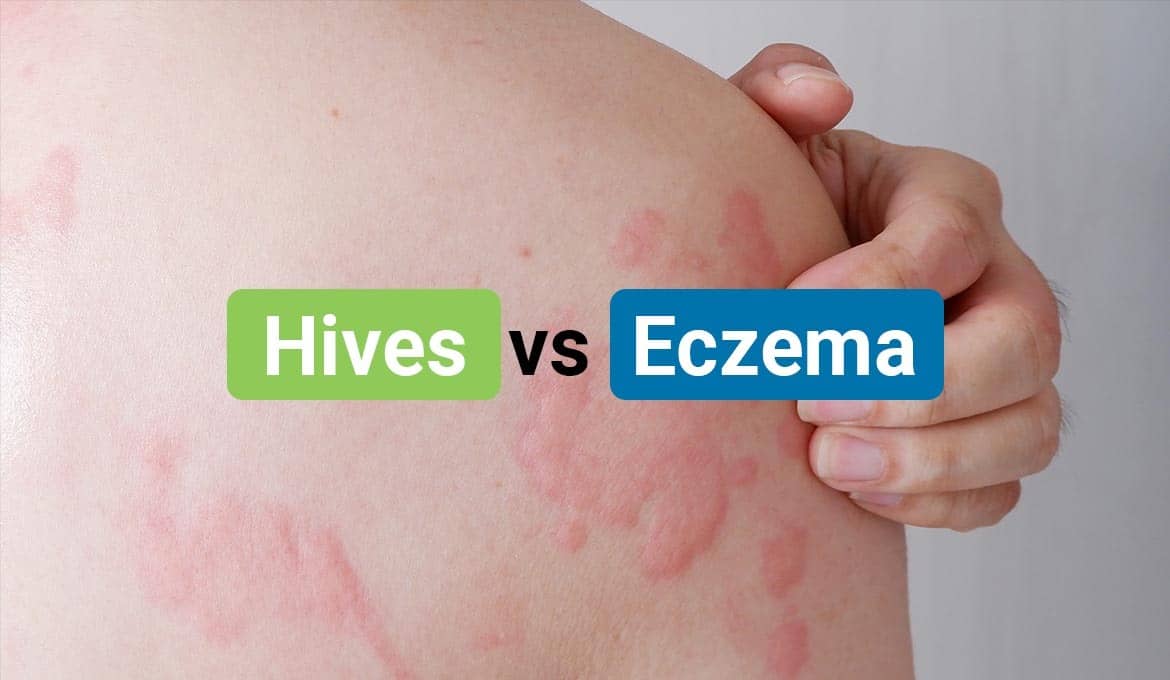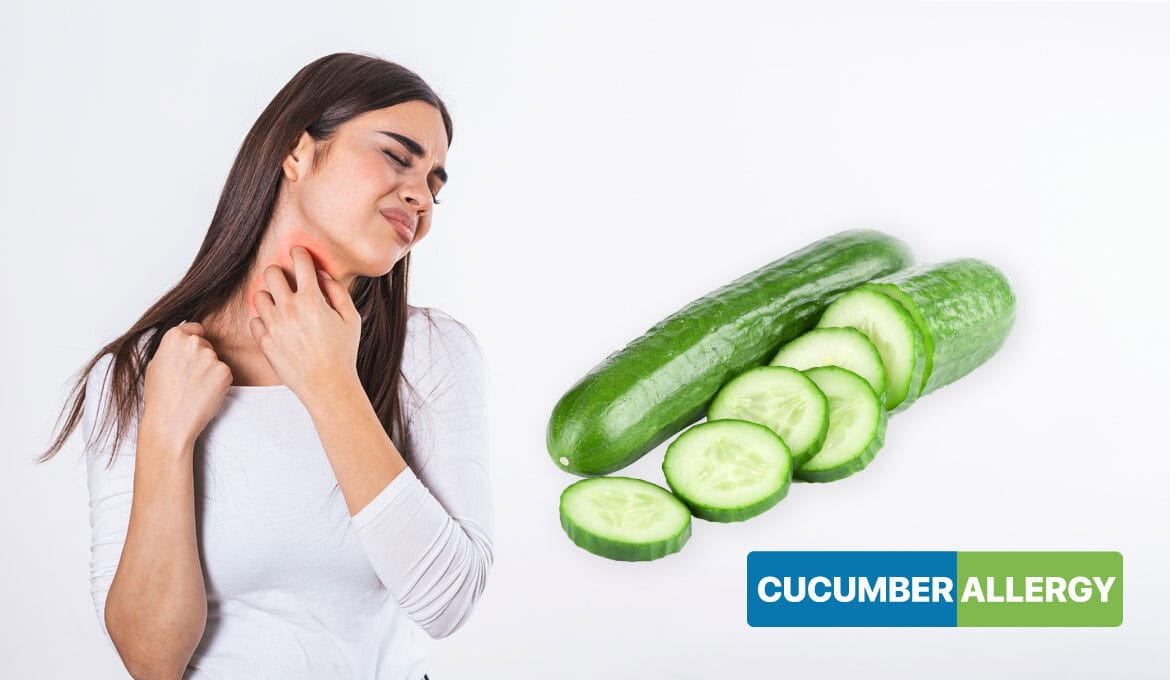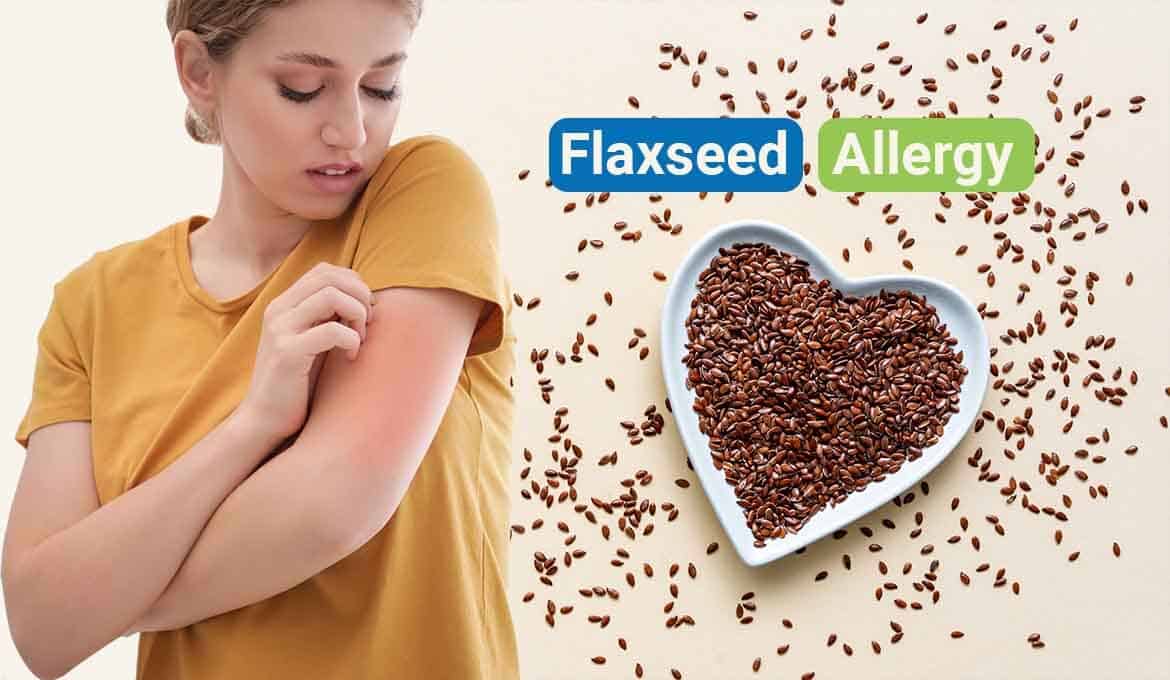
Are you experiencing unpleasant symptoms after having bread or pasta? Do you know what's causing it? It could be because of the presence of gluten or wheat. That means you may have some form of food allergy.
Food allergy is becoming widespread, especially among American adults. According to the Centers for Disease Control and Prevention (CDC), nearly 6.2% of US adults have food allergies. Two of the most common ones are wheat and gluten allergies.
For many individuals, eating wheat is safe. If you have a wheat allergy, your body may see wheat as a dangerous “invader.”
Wheat allergy is commonly confused with having celiac disease, gluten intolerance, or gluten allergy, but they are all entirely different. Despite their differences, these conditions share a common thread: “An immune system response leading to a range of symptoms.”
Keep reading to learn everything about wheat and gluten allergies, along with their symptoms, diagnosis, and treatment.
What is Wheat Allergy?
Wheat allergy is an adverse immunological reaction to protein found in wheat. This means your immune system overreacts to wheat as it might to seasonal allergies.
Wheat allergies can range from moderate to severe; for reactions that result in anaphylaxis, a potentially fatal allergic reaction, immediate medical intervention is required. For some, it can also be caused by inhaling wheat flour.
But what exactly causes wheat allergy?
Proteins in wheat cause your immune system to overreact. There are four types of wheat protein that you may be allergic to:
- albumin
- gliadin
- globulin
- gluten
Sources of wheat proteins:
You may think wheat is only found in bread, but the truth is wheat proteins, and gluten can be found in many other foods you may not be aware of. Some of the foods that may include wheat proteins are:
- Cakes, muffins, and pancakes
- Breakfast cereals
- Pasta
- Vegetable gums
- Meat products like hotdogs
- Soy Sauce
- Dairy products, including cream cheese and ice cream
- Some natural flavorings
Wheat Allergy Symptoms
Wheat allergy is most common in children. About two-thirds of them outgrow it at a relatively young age. A person with wheat allergy may show the below symptoms shortly after consuming or coming in contact with products containing wheat:
- Hives or skin rash
- Digestive problems
- Anaphylaxis
- Asthma
- Severe headache and dizziness
- Irritation in mouth and throat
- Nasal congestion
- Difficulty breathing
- Eye irritation
- Eczema
- Nausea and vomiting
Note that these symptoms may range from mild to severe. Severe wheat allergies can result in anaphylaxis, a condition in which your throat swells and your body goes into shock. It could be life-threatening; hence, immediate medical attention is needed.
Regardless, if you experience any of these signs after exposure to something containing wheat, speak with a healthcare specialist.
How Is Wheat Allergy Diagnosed?
Doctors will perform various allergy tests based on the symptoms shown. Before performing the test, they will ask you a few screening questions, like:
- Do you have a family history of wheat or gluten allergies?
- What symptoms do you have currently?
- Do you take any OTC drugs to relieve your symptoms?
- Do you already follow a gluten-free diet?
- When did you notice your symptoms begin to appear?
- Do you have any other type of food allergy?
Once they analyze your answers to these questions, they may conduct the following allergy tests:
i) Blood Test:
Because wheat allergy can be mistaken for wheat intolerance or celiac disease, a blood test is advised to diagnose it.
Your doctor will do a blood allergy test, which can detect the presence of immunoglobulin E (IgE).
For those who don’t know, IgE is basically an antibody that your immune system releases in response to a specific allergen (in this case, wheat). This test is convenient and safe, and the results are mostly 95% accurate.
ii) Biopsy:
Another diagnostic test is a biopsy, which helps diagnose a severe form of allergy known as celiac disease. This test requires taking a tissue sample from your intestinal wall using endoscopy.
If the result shows inflammation or damage to the intestinal wall, the person may have celiac disease. This testing method is usually painless as there are no nerve endings in the wall.
iii) Skin Prick Test:
This test takes just half an hour. This simple test involves exposing your body to a small amount of wheat proteins.
The healthcare specialist will first clean an area of your skin, usually your forearm or back, using iodine or alcohol. They will then prick your skin using a thin needle and fill it with a small amount of liquid wheat proteins.
You will gradually feel an allergic reaction after 10-15 minutes of exposure. You may notice round, red, itchy bumps or discolored raised spots on the exposed skin area.
Then, the doctor will measure the size of your wheals and provide you with treatment.
Wheat Allergy Treatment
Treating and managing a wheat or gluten allergy requires strict adherence to a wheat-free diet. Luckily, there are many foods available that don't contain wheat.
Some of the foods that are free from wheat include:
- Fresh fruits and vegetables
- Rice
- Potatoes
- Pulses, such as beans and lentils
- Oats
- Rye
- Quinoa
Don't forget to read the food labels carefully to search for various names of wheat. You might notice a label with “Contains: Wheat” in some packages.
When it comes to medications, antihistamines and corticosteroids are common drugs to relieve mild symptoms of wheat allergy. Antihistamines start to work about 30 minutes after taking it, whereas corticosteroids usually begin to work in about an hour.
If you experience severe symptoms like anaphylaxis, you will need to get treated immediately. You will notice it within seconds or minutes of having wheat foods, which can be deadly. In this case, epinephrine may help.
Epinephrine (adrenaline) is considered the first-line and only effective treatment for anaphylaxis. It is available by prescription in an auto-injector form.
It works by reversing the symptoms of anaphylaxis and works immediately after injecting. Your doctor will advise you to keep two or more epinephrine injectors available all the time just in case you get a severe allergic reaction when you're out.
What is Gluten Allergy?
Gluten is a complex protein found in grains, including wheat, barley, and rye. It makes up about 80% of the amino acids present in these grains. Gluten is also present in certain foods like pasta and cereal.
Some folks are allergic to wheat, but that's not the same as gluten allergy. Many people confuse this and are unaware of this fact.
The truth is there's no such thing as gluten allergy – but there's something called gluten intolerance. Sometimes, it is referred to as non-celiac gluten sensitivity (NCGS).
Gluten intolerance is when someone gets sick instantly after consuming food that has gluten in it. They may feel nauseous or bloated throughout the day.
The most severe gluten-related disorder is known as celiac disease, which we will discuss later in this blog. Apparently, about 6% of Americans are gluten intolerant, and it affects far more than celiac disease.
Signs Of Gluten Intolerance
Some of the symptoms of gluten intolerance are similar to those of wheat allergy. However, gluten intolerance symptoms generally vary from person to person.
A person with gluten intolerance can experience the below symptoms for hours or days after having food with gluten in it:
- Anemia (Iron deficiency)
- Anxiety and depression
- Abdominal pain
- Bloating or gas
- Brain fog or trouble remembering information
- Diarrhea or constipation
- Skin issues such as eczema, skin rashes (aka gluten rash)
- Sudden weight loss
- Muscle and joint pain
- Low energy and chronic fatigue syndrome
- Irritable Bowel Syndrome (IBS)
Compared to celiac disease or a wheat allergy, gluten intolerance is less common and has fewer severe symptoms.
Research also suggests that non-celiac gluten sensitivity (NCGS) may result in major changes in the gut microbiome with an increase in pathogenic microbes. This seems to be a big problem, considering that our overall health and well-being rely deliberately on gut health.
Diagnosis of Gluten intolerance
At present, there is no specific test to diagnose gluten intolerance. But here's the general diagnosis method.
Similar to the diagnosis of wheat allergy, the doctor will have several screening questions about symptoms and family history. After this, they will do the following test to confirm the diagnosis:
The doctors will advise you to eat foods that contain gluten for 5-6 weeks. During this period, they may perform blood and skin tests to rule out celiac disease or a wheat allergy.
If neither of them shows, that means you don't have a wheat allergy. The doctor will next instruct you to abstain from gluten for six weeks.
If your symptoms get better while you're on a gluten-free diet, you slowly reintroduce gluten back into your food. If symptoms come back, that means you have a gluten intolerance.
Treatment of Gluten Intolerance
There's no cure for gluten intolerance. A strict, life-long gluten-free diet is the only way to manage it. Work with your healthcare provider or doctor to plan a proper gluten-free diet for you.
Some doctors may recommend you add probiotics to your diet as they help increase the good bacteria in your gut. They will reduce your symptoms of bloating or constipation.
Some research recommends taking some form of enzyme to help you digest gluten. However, studies are still not conclusive and are underway.
But what if you accidentally eat gluten sometimes despite following a strict diet? In this case, you must drink plenty of water, eat fewer meals, and try ginger tea to relieve your upset stomach. This will definitely alleviate your symptoms.
Is Wheat Allergy and Gluten Intolerance The Same Thing?
A wheat allergy may appear to be the same as a gluten intolerance. However, they are actually pretty different – despite the fact that many of the same foods are off-limits!
But yes. As many of the symptoms intersect with gluten-related conditions, determining which is responsible can be quite tricky. Here's how they differ:
Intolerance is mostly a digestive issue. It is caused by the body's inability to digest meals properly. In the matter of gluten intolerance, the person's body is unable to properly digest gluten, which brings about extreme pain and makes you uncomfortable.
On the flip side, a wheat allergy involves the immunological system. When you have a food allergy, your body recognizes it as dangerous and issues an attack in response, which may or may not be fatal.
If you feel you have any one of these conditions, try to identify any connections between symptoms and the particular foods you're eating.
After getting to know your condition, you can start making diet and lifestyle changes accordingly. You can easily find wheat-free and gluten-free breads, pasta, waffles, cereals, and other products on the market.
A Quick Look at Celiac Disease
Celiac disease is a serious condition where the body attacks its own cells following the ingestion of gluten. This damages the small intestine and prevents essential nutrients from being absorbed.
The condition affects roughly 1% of the American population (1 in 133), with incidence shown to have increased five times over the last 25 years.
Some of the symptoms include:
- Indigestion
- Gas and bloating
- Nausea and vomiting
- Persistent Diarrhea or Constipation
- Weight loss
- Early osteoporosis or fractures
- Iron-deficiency anemia
- Missed periods
What are the Food Alternatives?
In modern days, it's quite easy to find foods that are free from gluten and wheat. Fortunately, many manufacturers are trying to produce allergy-friendly food products and are offering safe and healthy options for those suffering from wheat allergy and gluten intolerance.
Some of the wheat-free and gluten-free foods are:
- Rice (most common one)
- Quinoa
- Corn – cornmeal, grits, and polenta labeled gluten-free
- Sorghum
- Amaranth
- Fresh vegetables
- Potatoes
- Gluten-free bread
- Flax seed
- Chia
- Millets
Avoiding wheat is much easier than avoiding gluten. However, the list of foods made with wheat is still relatively widespread, and staying away from this ingredient can be tricky for some.
Bottom Line
As we saw, wheat is a grain, whereas gluten is a protein found in grain. It can be challenging to live with wheat and gluten allergies. But don't worry; you're not alone. It's very common today.
All you should do is eliminate gluten from your diet if you have gluten intolerance or wheat allergy. However, not that consuming gluten sometimes is unlikely to cause serious health issues unless you have a celiac disease.
Sometimes, you may feel irritated, not knowing the reason behind your symptoms, but your doctor can help. They will do some allergy tests to confirm if it’s a wheat or gluten allergy and prescribe medication accordingly.
Also, if you're considering going completely gluten-free, speak with your doctor or a certified dietitian about the strategies for a healthy diet plan.
FAQs
1. Can a gluten allergy go away?
Ans: Yes, gluten allergy is a temporary condition. If you've got celiac disease, it can not go away, as it requires a long-term commitment to a gluten-free diet.
2. What is the difference between a wheat allergy and celiac disease?
Ans: Wheat allergy happens when your body produces antibodies to proteins found in wheat. On the contrary, celiac disease is an autoimmune condition in which the body attacks your small intestine when you ingest gluten. This leads to a different kind of abnormal immune system reaction.
3. How do I know if I am allergic to wheat or gluten?
Ans: If you notice any adverse effects like bloating, swelling, or mouth irritation instantly after consuming something that has wheat, that means you are allergic to wheat or gluten. You may also experience some itchy rash on your skin.
4. How long does it take to get wheat and gluten out of your system?
Ans: Many people have reported some improvement within a couple of days of avoiding gluten or wheat. But generally speaking, it takes two to three days for your system to eliminate gluten completely.
5. How can I prevent gluten intolerance?
Ans: Currently, there is no easy or proven method to prevent gluten intolerance. All you can do is reduce the symptoms by sticking to a firm gluten-free diet.
Read Also:












